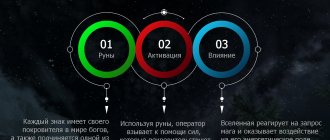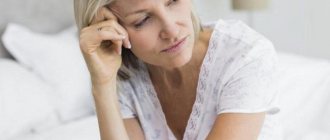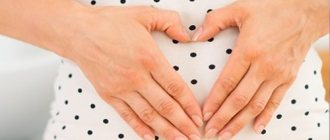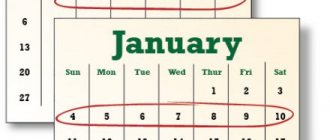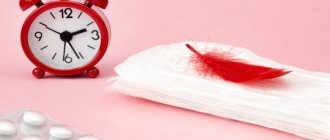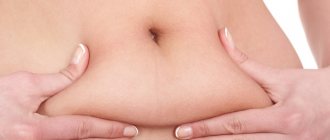Every month women have their period. Nobody likes this period, and some look forward to it with fear because of the terrible cramping pain. There are times when a representative of the fairer sex is forced to stay at home and call an ambulance because she feels terrible. What causes severe pain during menstruation, how to prevent their occurrence and relieve cramps if they have already appeared, you need to know in order to be able to help yourself before visiting a doctor .
Why does my lower abdomen hurt?
Dysmenorrhea is pain in the lower abdomen that accompanies menstruation. They arise due to the fact that within a month the epithelium grows in the uterus, to which the embryo will attach after fertilization, and if this does not happen, the body gets rid of it through bleeding. Doctors have found that it is impossible to get pregnant on the first day of the cycle.
During menstruation, a woman experiences slight malaise, discomfort in the abdomen and fatigue. However, this does not prevent her from adhering to the usual rhythm of life. If your critical days are very painful and your cycle is irregular, then you need to consult a gynecologist.
How to reduce painful symptoms during menstrual periods
With primary dysmenorrhea, you can improve your well-being at home. Remember a few simple manipulations; when you perform them, there should be a significant improvement in your condition:
- massage the abdomen and lower back with light circular movements in a clockwise direction;
- warm relaxing shower;
- resting on your side in the fetal position;
- compress with sea salt, and then a warm bath for fifteen minutes;
- taking No-shpa, Ketonal, Ibuprofen and Valerian;
- light relaxing chamomile tea, infusions of parsley, strawberries;
- rubbing essential oils of St. John's wort, yarrow, sage;
- for severe bleeding and pain, you can use cold (ice cubes on top of clothing).
During menstruation, swimming helps to relax muscle tissue, but do not forget about the risks that arise when swimming in open water. Therefore, you should be extremely careful in this matter, although the benefits from it are quite great, because in the process there is an active production of endorphins - joy hormones, which act better than any pain reliever.
But, despite these recommendations, it is worth remembering that in case of intense pain you should not self-medicate, but should immediately consult a doctor, since such a condition may be the body’s cry for help.
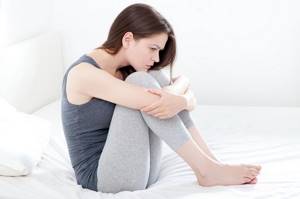
Types of pain during menstruation
There are two types of dysmenorrhea: primary and secondary.
Primary occurs within two years from the beginning of the girl’s first menstruation in her life. It is not associated with any pathologies, and the pain is natural and occurs due to the expulsion of an unfertilized egg from the ovary. This type of malaise usually disappears after the first birth. With primary dysmenorrhea, the cycle does not go astray, but remains normal and regular.
Secondary, or as it is also called, acquired dysmenorrhea, occurs due to diseases and changes in the genital organs. It appears more often in women over 30 years of age and is accompanied by cardiac arrhythmia, tachycardia and vegetative-vascular abnormalities (excessive sweating, dizziness).
If the unpleasant sensations do not change over the years, then such dysmenorrhea is called compensated. If the pain only intensifies with age, then, accordingly, it is decompensated.
Types of associated ailments
In addition to nagging pain in the genital area, menstruation may be accompanied by:
- Discomfort in the heart.
- Severe headaches or migraines.
- Fatigue quickly.
- Unpleasant sensations in the eye area.
- Sleep disturbance.
- Pressure surges.
- Irritability and depressed mood.
- Swelling.
- Mood swings.
- Pain in the lower back.
- Dizziness, nausea and vomiting.
- Increased sweating.
- Breast pain or tenderness.
- Constipation, diarrhea or other abnormalities in the gastrointestinal tract.
Traditional recipes for pain during menstruation
An infusion of boron uterus reduces pain and symptoms of PMS.
Insist under the lid for 3 tbsp. l. raw materials, poured 0.5 liters of boiling water until it cools down. Drink 0.5 cups 3 times before meals.
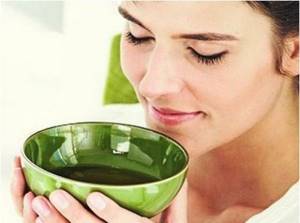
Oregano , 1 tablespoon, pour boiling water, 1 glass, and leave covered for 2 hours. Drink a day, taking small sips.
Chamomile and lemon balm soothe, relieve spasms and act as an anti-inflammatory agent. For 1 glass of boiling water take 1 tbsp. l. of both herbs. Wrap the container in several layers of foil, insulate it with towels and leave for 3 hours. Drink it several times before meals, swallowing the infusion little by little, starting 7 days before the arrival of these days.
Raspberry leaf tea . Pour 3 tablespoons of dried leaves into 0.4 liters of boiling water and leave for 1 hour. Drink a little per day.
Cinnamon , cloves and chamomile are drunk in a decoction to relieve spasms and reduce malaise.
For 200 ml of boiling water:
- cloves and cinnamon - 1 tsp each;
- chamomile – 2 tsp.
When it boils, keep on low heat for 20 minutes.
Drink throughout the day only during painful periods.
Swelling is relieved with a rosehip decoction or a kidney diuretic. It is good to eat watermelon in summer.
Ginger added to tea reduces pain.
Causes of menstrual pain
Menstrual pain can occur due to the following factors.
- Incorrect location of internal organs, in particular the uterus.
- Formed adhesions and scars after artificial termination of pregnancy (abortion).
- Heredity.
- Constant psycho-emotional stress.
- Lack of iron, calcium and magnesium in the body.
- Hormonal imbalances.
- Avitaminosis.
- Installed intrauterine device.
- Ectopic pregnancy.
- Sedentary and inactive lifestyle.
- Inflammation in the pelvis.
- Diseases such as uterine fibroids, endometriosis.
- Formation of cysts or polyps in the uterus.
- Sexually transmitted infections.
If the sensations do not interfere with the girl’s normal activity, then there is no need to worry and draw hasty conclusions. If the spasms interfere very much and cannot be tolerated, then you need to consult a specialist.
Prevention of pain during menstruation
To prevent menstrual pain from causing you inconvenience:
- Lead an active lifestyle and play sports. According to statistics, female athletes are much less likely to complain about pain during menstruation. Moreover, the sport can be anything - from yoga, Pilates and swimming to martial arts and dancing.
Spend more time outdoors and get enough sleep.
Include in your diet foods rich in calcium (cottage cheese, cheese, seafood) and magnesium (buckwheat, parsley, spinach, dark chocolate).
Try to eat less spicy and fried foods and avoid drinking coffee and strong tea.
Give up bad habits.
Do not overcool, avoid stressful situations.
Visit your gynecologist once every six months, even if nothing bothers you. Any disease is much easier to prevent than to treat. Not to mention that many processes in the female body can occur asymptomatically for a long time.
Treatment of dysmenorrhea
When medications no longer help to get rid of terrible symptoms and a woman is forced to give up all her duties for several days every month, then an examination by a gynecologist is vitally important.
Most of the medications your doctor will prescribe are aimed at reducing the amount of prostaglandins produced and thereby reducing the contractions of the uterus that cause attacks.
The doctor may prescribe low-dose hormonal drugs - oral contraceptives. Anti-inflammatory non-steroidal drugs and antispasmodics will also have an effect.
Some time before the onset of menstruation, the doctor prescribes complex medications that include iron, calcium, magnesium and vitamins. You need to drink them in advance so that by the beginning of the cycle the necessary microelements accumulate in the body and have the desired effect.
Electrophoresis and UHF provide pain relief and warming. These procedures will help relieve pain, but it is also better to start them in advance.
Hormonal reasons
The sensitivity of the female body and the activity of the uterus also depend on hormonal levels. If the amount of estrogen is increased, then menstruation will be painful. As a rule, this condition occurs in women after 30 years of age. When the norm of all hormones is disrupted, algomenorrhea and PMS can occur simultaneously.
Pain during menstruation is directly related to an imbalance of the hormone progesterone and prostaglandin. Prostaglandins are a kind of chemical substance that plays a dominant role in the occurrence of symptoms that cause discomfort during menstruation. They stimulate contraction of the uterus during menstruation. Accordingly, the greater the force of the contractions, the stronger the pain. If there are too many prostaglandins, the woman may experience nausea, vomiting, headache, chills and tachycardia.
Physical education to eliminate pain
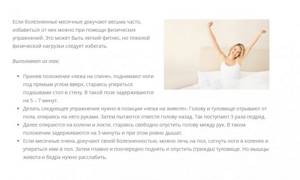
Physical activity strengthens muscles, improves blood circulation and helps cope with pain. If it is difficult to do gymnastics, you can simply walk in the fresh air for at least 30-40 minutes a day. The most effective set of exercises:
- Lying on your back: legs are raised at a right angle and held for 1-2 minutes.
- Lying on your stomach: rest your hands on the floor and lift your chest, trying to bend your back as much as possible.
- Lying on your back: bend your knees, bend your stomach up, lean on your legs, and lower yourself down.
Physical education stimulates the production of endorphins - hormones that improve mood and relieve pain.
Proper nutrition
Fatty foods, refined sweets and large meals worsen the well-being of even a 100% healthy person. During menstruation, a balanced diet facilitates digestion, relieves excess stress, and makes organs work correctly.
It is best to avoid fried foods that burden the liver. The best choice is to eat light salads and lean meat. Dried fruits will improve digestion. It is better to avoid the abundance of raw fruits - they increase gas formation (especially grapes).
You should eat 5-6 times a day, limiting portions. You should also give up alcohol during this period, as it is a real blow to the body and circulatory system.
Thermal treatments
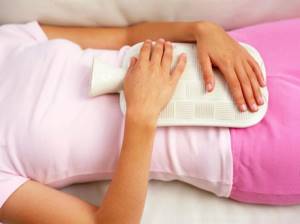
The heating pad can be used in the absence of inflammation
Dry heat helps combat soreness, but you need to be sure that the symptoms are not caused by an inflammatory disease, appendicitis or other purulent processes. In these cases, heating can lead to peritonitis and other complications.
Using a heating pad filled with hot water, you can warm up the lower abdomen and uterus. Before use, the heating pad should be wrapped in a towel or diaper so that it is not too hot. This gentle method will prevent the exacerbation of inflammation in the pelvic organs. It is recommended to keep the heating pad for no longer than 15 minutes and only 1-2 times a day.
Hot baths are prohibited during menstruation, but a short warm shower will help relieve fatigue, cleanse the body and eliminate painful cramps. During the procedure, you can massage your stomach - this relaxes tense muscles.
Warm oil (about 40 degrees) is suitable for use during the massage procedure. You can choose any basic product: peach, olive, coconut oil. Adding concentrated esters to it will improve the effect of the procedure.
Drinking regime
Many women neglect the rules of nutrition and ignore the advice of doctors - to drink as much water as possible every day in the absence of contraindications. Some girls experience pain during menstruation due to dehydration, which occurs with blood loss.
Dehydration leads to severe pain in the lower abdomen. It can be distinguished by a moderately sharp or dull sensation. A woman can drink pure water, herbal or dried fruit compotes, as well as diluted vegetable and fruit juices, but only natural ones.
Any of the described methods for eliminating painful sensations in the lower abdomen during menstruation are suitable only for those women who do not have inflammatory diseases, infections and other pathologies. If these violations are present, the methods will be ineffective.
What causes severe pain during menstruation?
Only a gynecologist can determine the exact cause of increased pain during menstruation. Therefore, you need to consult a doctor with this problem. Most often, the reasons lie in the following factors:
- Disturbances in the functioning of the endocrine system, hormonal imbalance;
- Inflammatory process in the uterus or appendages;
- Endometriosis is a gynecological disease in which cells of the inner layer of the uterus grow beyond its boundaries;
- Various formations: polyps, fibroids, fibroids, malignant formations;
- Formations on the ovaries, cysts;
- Ectopic pregnancy;
- Poor nutrition, which leads to magnesium and calcium deficiency;
- Pathological changes in the placement of the uterus (curvature);
- Lack of physical activity, as a result of which the muscles of the lower pelvis remain completely untrained;
- Severe stress;
- Hereditary predisposition, transmission of predisposition through the female line;
- Uterine device or other contraceptives.
If severe pain lasts no more than a day, it is not accompanied by additional symptoms, and does not cause painful shock, then there is no need to panic. In such cases, mild painkillers will help cope. If such a symptom appears suddenly and is very intense, you should consult a doctor.
Acupressure in the fight against severe pain during menstruation
Acupressure can also relieve severe pain during menstruation. Its essence consists of pressing on certain areas of the body. Below we will look at several massage manipulations that will help you overcome unpleasant discomfort: • Gently press on the point located on the inside of the knee bend of your left leg for 2 minutes. Then do the same with your right leg. • Take two tennis balls and place them in a cloth bag or sock. After this, lie on them with your back so that they are located in the lower back on both sides of the spine. Press your back onto the balls and roll them across the floor with your muscles for a few minutes. • Lie on your back and use your thumbs to apply pressure to the points below your navel and lower groin area.
Pressing on points in the central part of the back and on the tailbone will also help. After pressing, each point must be held with your finger for 10 seconds, and then gradually released.
